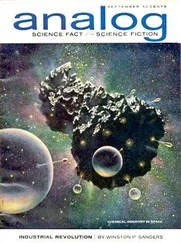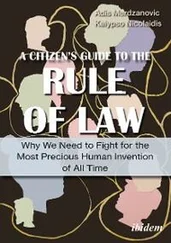The Allies agreed that with a world war already in progress, an invasion made perfect sense. Unfortunately, President Wilson had already whipped out his Fourteen Point Plan for everlasting world peace; it stated emphatically that countries should be allowed to rule themselves, which was what the Russians were doing in spades. Despite his plan for world perfection, he threw his ideals overboard, under pressure from the British and French.
Fortunately, a cover story dropped into Wilson’s lap in the form of the lost Czech legion. The legion, nearly 30,000 men strong, had been fighting the Germans and Austrians alongside the tsar’s serfs, who kept dying in order to keep themselves in bondage to their dim-witted ruler. Once the Russians pulled out of the war, the Czechs, their ranks filled out by deserters from the Austrian army, became soldiers without a war. The Czechs received permission from the Bolsheviks to ride the Trans-Siberian Railroad to the port of Vladivostok on the Pacific coast, from where the effortlessly feckless French had kindly agreed to transport them safely back to the charnel house of the western front.
The Allies now had their cover story: the Czech troops needed help. Plus, there was a lot of equipment the Allies had sent the ungrateful Russians, which sat rusting on the docks of Vladivostok as well as the northern Russian ports of Archangel and Murmansk. The Allies owned the equipment, and if the Russians were going to quit playing war, they wanted it back.
When the secretary of war handed Wilson’s memo to Graves in the train station in Kansas City on August 3, 1918, he apologized for sending him to Siberia and promised, someday, to tell him the real reason why he had to go. He told Graves, “Watch your step. You will be walking on eggs loaded with dynamite.” And then he left.
The Aide-Memoire, as the scholarly Woody Wilson named it, is clearly the contortions of a self-loving politician and not the concrete thinking of a military leader. Nevertheless, it represented the only guidance provided to the U.S. invading force. Wilson’s vacuous freshman paper was actually a unique diplomatic soufflé, a noninvasive invasion, and not the gigantic playbook one would expect for conquering the world’s largest country. Graves was left to ponder the confusing seven-page invasion memo that contained one unspoken message that rang out like a bell: Invade Russia, but don’t cause trouble.
WHAT HAPPENED: OPERATION “SIBERIAN STORM”
Graves, despite being caught in a fantastical situation, remained stubbornly rational and interpreted the confusing memo as an order to maintain total neutrality after invading. Upon landing in Vladivostok (approximately 5,000 miles away from the seat of power in Moscow) on September 1, 1918, General Graves discovered his micro-invasion force surrounded by enemies: hostile Russians, both Bolshevik and anti-Bolshevik (the Whites), as well as the French and British who were openly working to oust the Bolsheviks and trying to trick the Americans into helping them by shooting someone. Vladivostok itself was controlled by a portion of Czech troops apparently trying to figure out how to get their brethren, who were stuck in the middle of Siberia, out to Vladivostok.
In addition, a large force of Japanese troops were hunkered down trying to take advantage of the chaos in Russia to gobble up chunks of Russian territory. Graves quickly deduced that virtually any activity by U.S. troops could cause a confrontation with one of these armed groups. He approved a plan designed to thwart all the threats against the valiant American doughboys: guarding empty buildings for which the U.S. government was also paying the Russian landlords rent, exploring the city, drinking vodka, and chasing women. They bunked in the old tsarist barracks, which had been built without bathing facilities — in the Russian style.
The U.S. troops, highly trained for their mission in the cities and towns of pre-Prohibition America, failed to execute the plan perfectly. As is often the case with large numbers of armed men sharing the same area who don’t speak the same language, actual fighting soon broke out, although it was more fisticuffs than large-scale troop maneuvers. The first U.S. casualties took place on September 16, 1918, after an encounter with the Bolsheviks, who had somehow caught wind of the fact that they were being invaded and teamed up with German and Austrian prisoners to take on the Allies.
Any attempts by Graves to help the Czech legion was soon abandoned when he saw that they were in fact in control of Vladivostok, and controlled many points west along the Trans-Siberian Railroad. A large group still remained west of Omsk, where the Bolsheviks were negotiating with them to try to get the Czechs to leave. They were dragging their feet because they were in fact helping the Whites oust the Bolsheviks in many of the towns along the railroad. Instead of needing to be rescued, the flexible Czechs kept themselves busy fighting the Bolsheviks up and down the railroad line wherever possible. And Graves had noticed that the Allies, despite professing that one of the aims of their mission in Siberia was to evacuate the Czechs, had neglected to send any ships to take them home.
By October more Allied troops had rolled into Vladivostok and spread throughout Siberia. The total now included 9,000 Americans, 1,000 French, 1,600 British, 72,000 Japanese, and the implausible sight of 12,000 Polish soldiers — all invading Russia. The Japanese, perhaps anticipating their Pearl Harbor gambit, glibly told Graves that their troops were there simply to load steel and coal onto ships.
General Graves, his options hampered by his position as the head of an invasion force, continued his desperate battle to not wage a war, against mounting odds. The British and French wanted to exploit the Siberian front to oust the Bolsheviks and replace them with a government that would continue the fight against Germany, as implausible as it was. The Japanese troops continued to occupy land and not give it back.
As one confused U.S. soldier put it, “What in hell are we doing here? After a while, we figured we had come over there to keep the Japanese from taking over, the English came over to keep an eye on us, and the French to check on the English, and so on.”
Meanwhile the fighting in the western front took a dramatic turn during 1918. The German high command, General Erich Ludendorff, knew that the German army had only one more shot left to win the war in 1918. The Allied blockade had by 1918 taken its toll on the Germans, who were facing severe food shortages. Ludendorff shifted manpower from the Russian front to the west, but instead of sending all available divisions, he kept some back to keep an eye on the chaos in Russia, and his western armies gained approximately forty divisions. Ludendorff also planned to use new shock troop tactics that had been successful against the Russians. Ludendorff rushed to knock out the British by cutting them off from the French. The British would be forced to evacuate before the American reinforcements, which were arriving daily, could make their presence felt. But his first two massive German drives in northern France, in March and then in April, despite achieving impressive breakthroughs in places, soon bogged down due to a lack of reinforcements and matériel.
THE CZECH GOLD
One of the legends that came out of the Siberian affair was this: Of the eight train cars of the tsar’s gold nabbed by the Czech legion, only seven were bartered to the Soviets for the legion’s freedom (along with Kolchak) and free passage out of Russia. What happened to the other trainload of gold?
No one really knows, of course. The Soviets were not scrupulous record keepers, but it’s clear that the amount of gold bullion, inherited by the provisional government from the tsar and which then ended up in Bolshevik hands, was considerably less than the tsar had held. And the Czechs weren’t talking except to refute the story, in 1924, by saying that some of it had been stolen under the noses of the Russian guards. It is indisputable that after World War I the Czech Legion Bank was established in Prague. The bank building features relief scenes of the legion’s retreat through Russia. In a bit of possible payback, the bank was looted by the Soviets in 1945 when they took over the country after World War II.
Читать дальше












